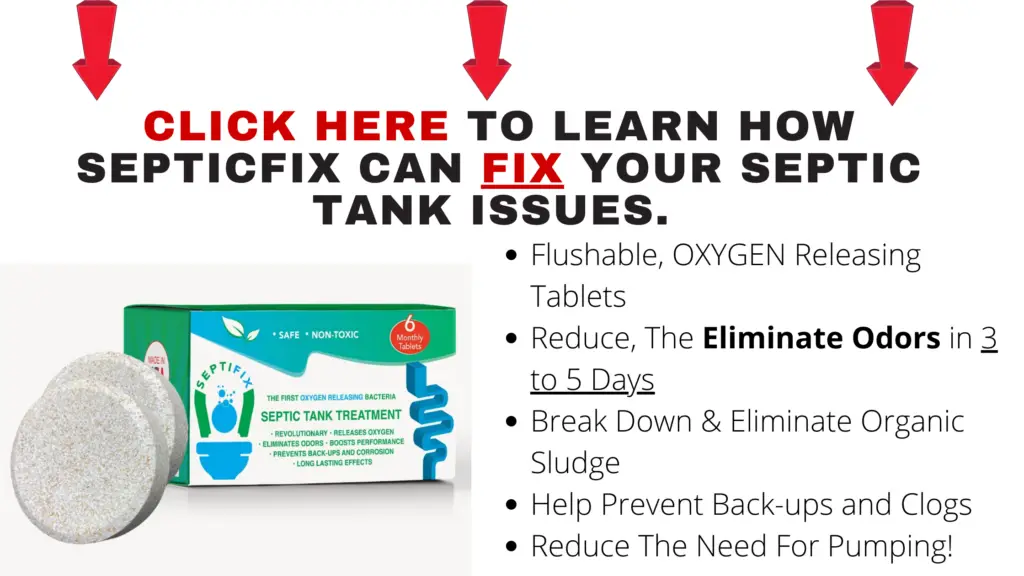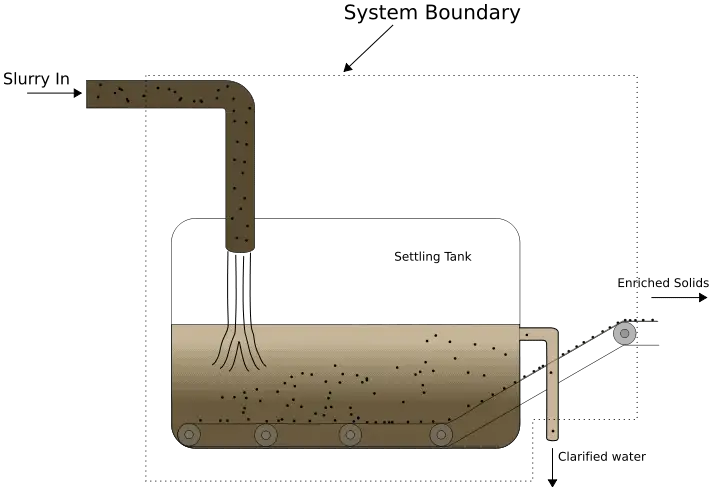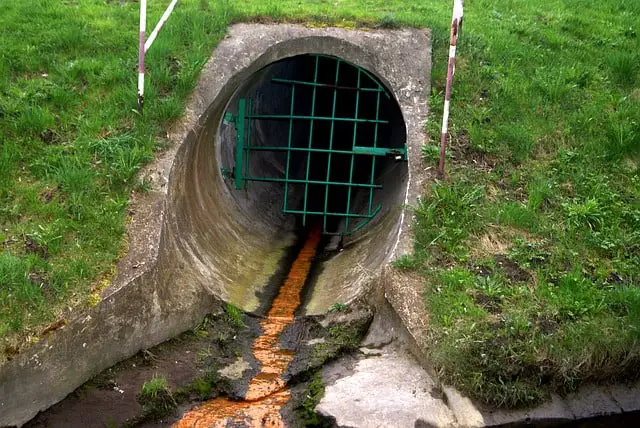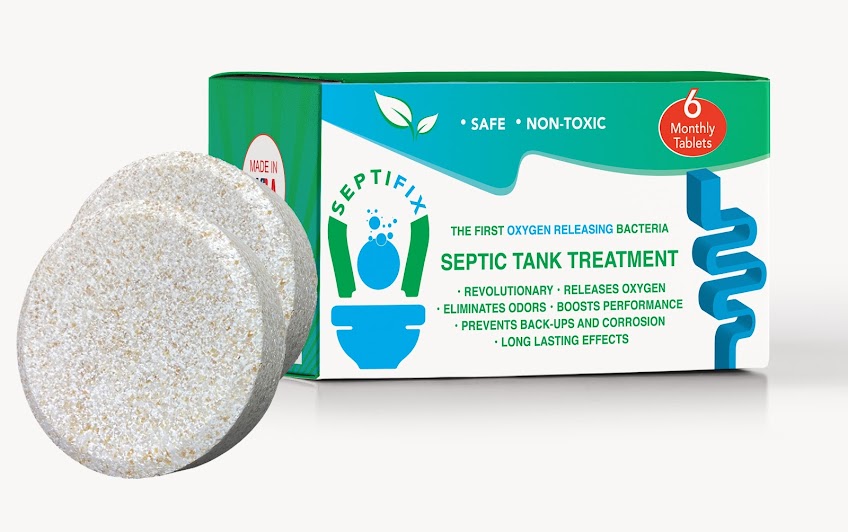What To Put In Your Septic Tank To Break Down Solids? Stop Build Up Of Solids in Your Septic Tank
Solid waste, if left to its own devices, can wreck your septic system. For this reason, you must clean your tank every three to five years. However, that doesn’t mean you should do no septic tank maintenance in between. In this post, we’ll show you how to take good care of your tank.
So, how to break down solids in a septic tank? Rotten tomatoes are an excellent choice for breaking down solids, so is active dry yeast. However, for stubborn solid waste, you may need to pump the tank, followed by a couple of rounds of back-flushing.
Continue reading to learn the best DIY methods to remove solid waste in your septic tank, and what should you do when homemade septic tank treatments fail to produce the desired results.
CALL 855.925.0760 FOR SEPTIC SERVICES


Can Rotten Tomatoes Put In A Septic Tank to Break Down Solid Waste in the Septic Tank?
Just like your stomach needs its supply of bacteria and gastric enzymes to help break down the food you eat, your septic system depends on its ecosystem — colonies of bacteria and enzymes — to decompose solid waste that’s present in it.
While the microbes in your septic tank are a diligent lot, they can always do with a bit of help from you. One great way to up the rate of decomposition in the tank is to feed it a few rotten tomatoes.
How rotten tomatoes can help? You may ask.
Well, they are rich in proteins called Pectinase, which posses the ability to naturally breakdown plant cell walls and pectin. As a result, they help in decomposing and recycling waste plant materials.
Every four months, send a small mercenary unit of three to four tomatoes to your tank’s aid via the garbage disposal. The key here is to make sure you break the tomato well and pass only half a tomato at a time. Make sure the water is running, as that helps ensure these solid-waste killers get flushed through completely.
What if there’s no garbage disposal in the house?
No problem. Place three or four tomatoes in a bag and gently smoosh the bag to squash the tomatoes into small chunks. Next, flush them into a toilet. Mind you, the hole at the base of the toilet is small, so ensure the chunks are small enough to nicely pass through it.
CALL 855.925.0760 FOR SEPTIC SERVICES
How to Use Active Dry Yeast to Add bacteria in your tank and break down the solid waste?
Don’t underestimate the power of good-old baking yeast. It can badger up the solid waste just as well as tomatoes!
Yeast helps by activating enzymes and promoting the production of bacteria that together lead the war against scum and sludge. To use it as a natural septic tank treatment, flush down the contents of ¼ oz pack of baking yeast down a toilet once every month.
What to do when Natural Septic Tank Treatments Don’t Work to increase bacteria in your septic tank?
Let’s face it. DIY cleaning solutions, like tomatoes and yeast, can only do so much. If your tank is filled to the brim with sludge, you must fall back on the professionals.
Call in the big guys with their big guns (or in this case big pumps) to bring the battle against solid waste to a successful conclusion. Sucking liquid from the tank and then backflushing the liquid a couple of times can break the back of most of the solid waste.
That said, this method too has its limitations. Pumping out the tank and backflushing it, while the most common method of cleaning a septic system, may fail to remove all scum solids. But don’t lose heart if that happens, because there are other alternatives to get the job down.
One option is to inject air into the tank. This will help mix the contents, which, in turn, makes it easier to break down solids. Another equally effective method is to make use of a mechanical mixer. It acts in similar fashion to a baking mixer, blending the contents till they form a slurry mix, which then can be removed using a vacuum pump.
A third method is to install an aeration system to reduce the sludge volume. However, this is more of a long-term solution and a way to clean the tank without pumping than a short-term fix. All the same, it is worth considering since it can breakdown 95% of the solid waste.
The anaerobic environment in a septic tank makes it harder for microbes, which thrive in oxygen (or the aerobic environment in other words). Adding a source of air to your tank and more microbes as needed help lower the sludge level.
Break down The Waste Using Enzymes That Help Break Solids In The Tank to maintain your septic tank running correctly.
Here’s what you need to do:
- Set up a diffused aeration system in the septic tank
- Add a microbe blend or a bio-activator
- Keep your aeration system in good condition
- Add extra microbes as needed
Well, that’s just about it on breaking down solids in a septic tank. Before we wind up the post, here are a couple of points you must keep in mind:
- Natural cleaning treatments discussed above are should be used to keep the tank clean between scheduled pumping. They are not a substitute for scheduled pump-outs.
- You should clean your septic tank once every three to five years. However, if your tank is smaller than usual or you generate more wastewater than normal, clean it out more frequently.
If you want to read our full review on SeptiFix – Check It Our Here.
When You Go Beyond Septic Tank Additives and Consider Getting Your Septic Tank Pumped
If you have a septic tank, you must be diligent in taking care of it. One way to do this is to add the right amount of septic tank additives every time you flush something down the drain or pour something down the drain. However, there are times when even this isn’t enough and you may need to get your septic tank pumped. Here are four signs that indicate it’s time to call a professional for assistance:
It Hasn’t Been Pumped in Several Years: The first sign that your septic tank needs pumping is that it hasn’t been pumped in several years. You may think that because nothing has gone wrong yet, there’s no reason to pump it out now. However, if it hasn’t been pumped in years, there is probably a lot of sludge at the bottom of your septic tank which can cause problems later on.
It Smells Bad: Another sign that your septic tank needs pumping is if it smells bad. If you notice an odor coming from your drains, there could be a problem with your septic system not working properly. While some odors are normal and harmless, such as when food particles go down the drain and rot, if the odor persists or gets worse, you may want to call a septic tank professional or consider a septic tank additive that specializes in reducing odors.
If you want a full list of warning signs that mean your septic tank needs to pumped, read this.
Call Septic Service Pros 1.855-925-0760 For Service or Request a Quote
Related Questions to How to Break Down Solids in a Septic Tank
What is bad for septic systems?
You should never put gasoline, oil, paint thinners, photographic chemicals, solvents, and insect or weed killers down the drain. Nor should you dispose of pharmaceuticals and chemical-based cleaning products down your toilets. Too much bleach is also harmful for the tank.
What happens if you don’t pump your septic tank?
If you don’t clean the pump, eventually the solid waste inside it will seep into the pipe that feeds into the drainfield. As a result, you may experience wastewater backing up, bad odor, and swampy areas around the drainfield.
How much sludge is normal in a septic tank?
As long as the level of sludge and scum combined is less than 25% of the operating depth of the septic tank, that’s normal. But once this level goes above the 25% mark, you should get the tank pumped out.
Got more septic tank questions? Then browse through our Septic Wiki page. It provides answers to a host of questions on various aspects of septic systems.
If you think it’s time for a septic tank pumping, use our state directory to find a reputable, affordable local professional near you.
CALL 855.925.0760 FOR SEPTIC SERVICES
Related Questions to How to Break Down Solids in a Septic Tank
What is bad for septic systems?
You should never put gasoline, oil, paint thinners, photographic chemicals, solvents, and insect or weed killers down the drain. Nor should you dispose of pharmaceuticals and chemical-based cleaning products down your toilets. Too much bleach is also harmful for the tank.
What happens if you don’t pump your septic tank?
If you don’t clean the pump, eventually the solid waste inside it will seep into the pipe that feeds into the drainfield. As a result, you may experience wastewater backing up, bad odor, and swampy areas around the drainfield.
How much sludge is normal in a septic tank?
As long as the level of sludge and scum combined is less than 25% of the operating depth of the septic tank, that’s normal. But once this level goes above the 25% mark, you should get the tank pumped out.
Got more septic tank questions? Then browse through our Septic Wiki page. It provides answers to a host of questions on various aspects of septic systems.
If you think it’s time for a septic tank pumping, use our state directory to find a reputable, affordable local professional near you.










